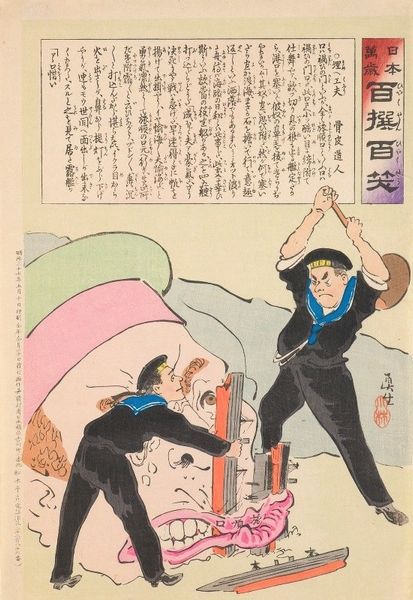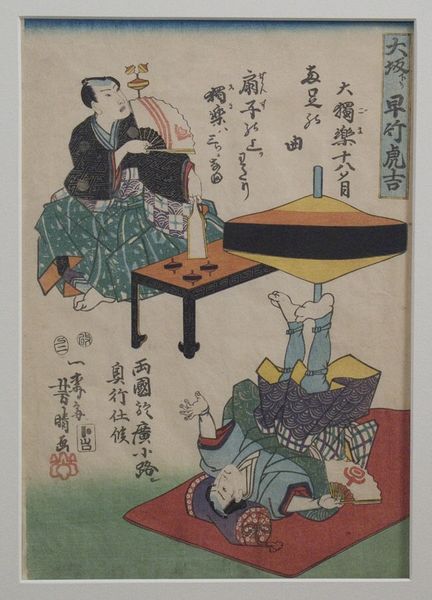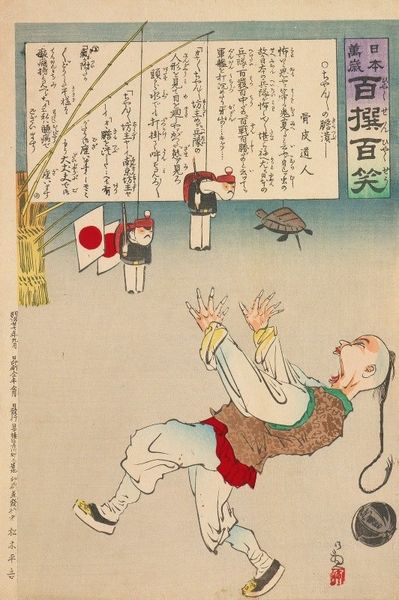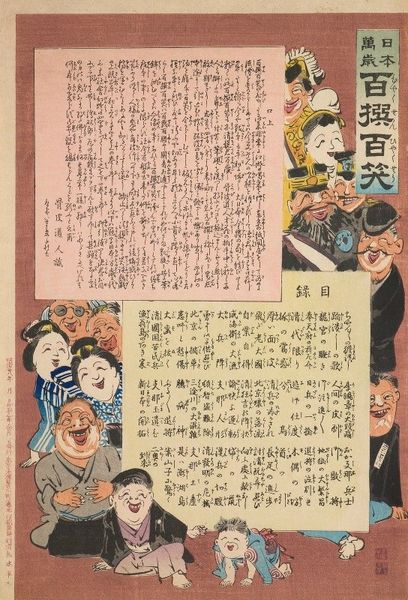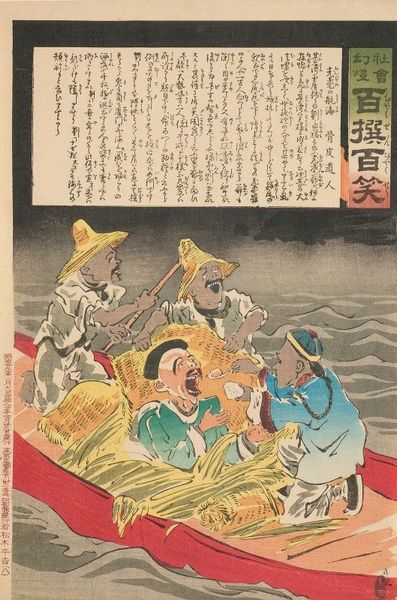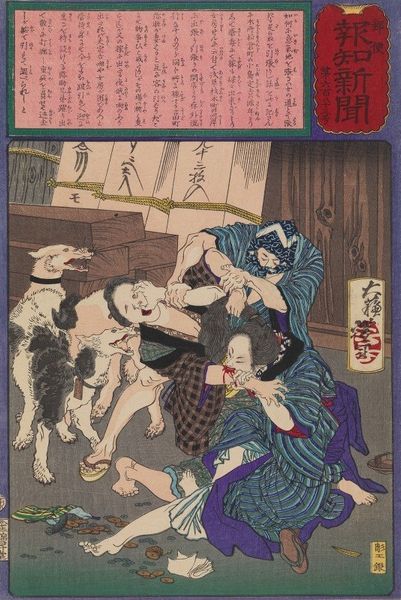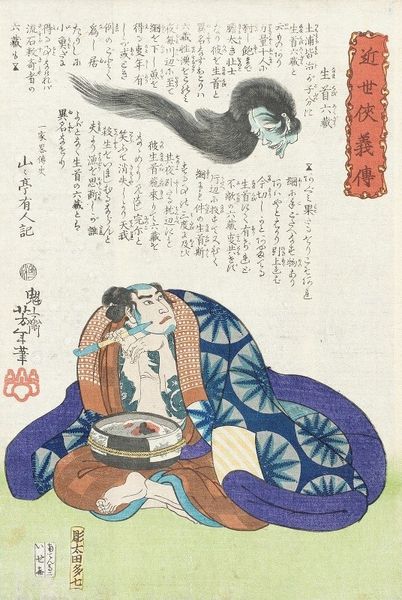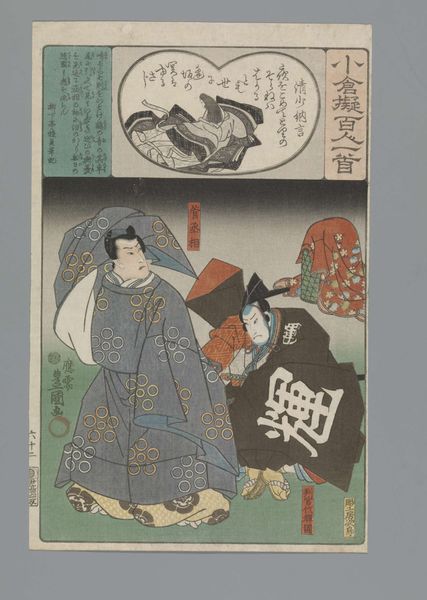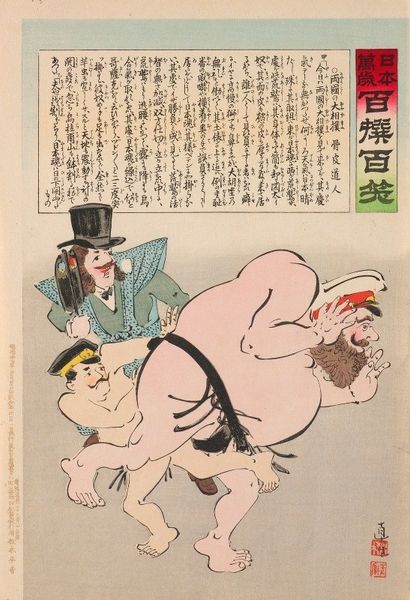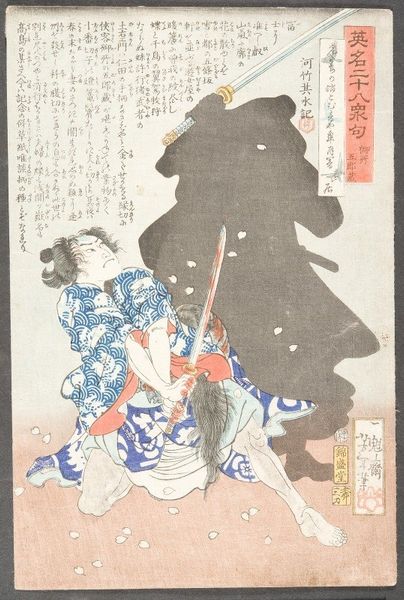
The Wife’s Welcome, from the Series ‘Long Live Japan! One Hundred Selections, One Hundred Laughs’ 1895
0:00
0:00
Copyright: Public Domain: Artvee
Curator: Here we have a color woodblock print from 1895 by Kobayashi Kiyochika, titled “The Wife’s Welcome, from the Series ‘Long Live Japan! One Hundred Selections, One Hundred Laughs’". What are your first impressions? Editor: Utterly bizarre and unsettling, I must say. The elongated necks and disembodied heads are… unexpected. Is it intended as a grotesque commentary, or pure playful absurdism? It certainly highlights, in an almost grotesque way, the postures and performative elements of greeting. Curator: Kiyochika often employed caricature to offer social commentary, even satirizing aspects of modernization and Westernization. I think we are supposed to consider, on one level, the power dynamic inherent in traditional Japanese greetings. Look at the positioning: The bowing woman’s lowered head indicates subservience. Editor: The materials speak too, in this case so eloquently! You know, prints like this would have been produced and consumed on a mass scale; it’s really striking how accessible they were. The very affordability of Ukiyo-e allowed such widespread dissemination of, as you say, satire and commentary. These weren't luxury items for the elite. This image reflects specific methods of labor, inks, and printing practices, all geared toward speed and accessibility. The woodblock process itself invites simplification and bold lines, influencing the visual style. Curator: Indeed. Consider, though, that while it could be viewed as playful—"one hundred laughs," remember—there's a pointed critique beneath. Perhaps of the superficiality or performativity of social rituals? The necks appear almost strained, mirroring the weight of expectations, no? Also consider how ingrained these symbols of deference are, almost involuntarily represented in how the individuals are configured! The heads are so animated, the faces expressive. Editor: Animated but ultimately static! Those necks are less physical structures and more akin to conveyor belts. They emphasize a production line aspect even in social interactions. I appreciate that disconnect, but do not know how to respond to it. Curator: Perhaps Kiyochika hints at a discomfort with tradition, subtly questioning the price of adherence in a rapidly changing society? Editor: Precisely! To see social norms treated with this level of graphic intervention reveals how deeply they’re embedded in lived experiences and societal mechanics, almost industrial processes. A thought-provoking combination of technique and social critique.
Comments
No comments
Be the first to comment and join the conversation on the ultimate creative platform.

